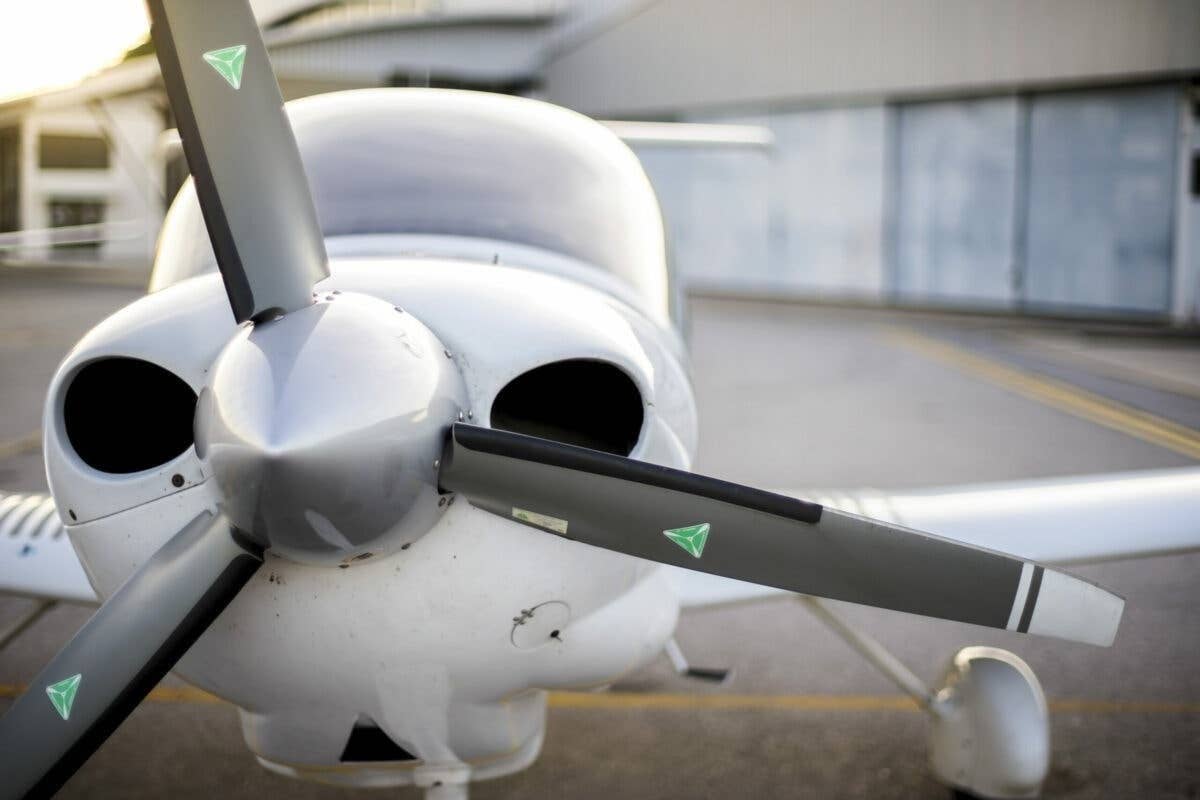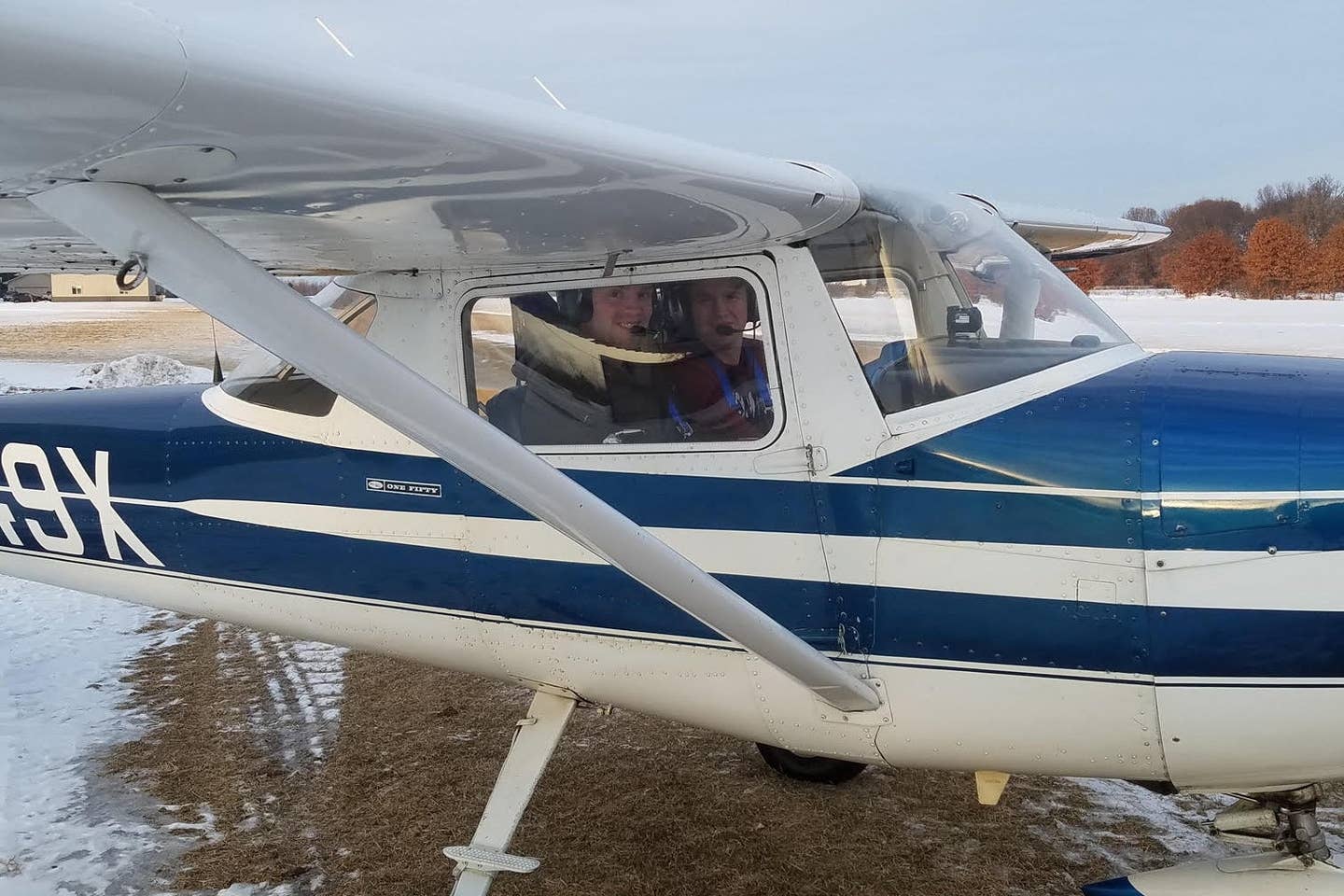
Logging hours towing banners doesn’t
guarantee competency in an airline cockpit.
There are jobs in which you're required to punch a time clock, and there are jobs in which your value is not measured in how long you do something but rather in what it is you do.
So what does this have to do with aviation? Congress, in its questionable wisdom, has passed a law that, in effect, determines a pilot's competency by the number of hours he or she "sits" at his or her "desk" and not by what he or she does while "sitting."
The law, H.R. 5900-20, entitled the Airline Safety and Federal Aviation Administration Extension Act of 2010, addresses two "titles" — Title I: Airport and Airway Extension and Airline Safety, and Title II: Pilot Training Improvement. The first deals with funding various airway and airport programs. It's the second that, I think, is problematic, particularly when it requires that all crew members of Part 121 air carriers hold an airline transport pilot (ATP) certificate and have "appropriate multiengine aircraft flight experience, as determined by the Administrator."
The law, which was signed by the president on Aug. 1, 2010, and became Public Law No. 111-126, calls on the FAA administrator to issue a notice of proposed rulemaking within 180 days of the law's enactment and to issue a final rule not later than 24 months after its enactment. But then there's a default clause: "The requirement that each flight crewmember for a part 121 air carrier hold an airline transport pilot certificate … shall begin to apply on the date that is 3 years after the date of enactment of this Act even if the Administrator fails to meet a deadline established under this section." (Emphasis added.)
A little history: The impetus that propelled Congress to pass the law was the highly publicized Feb. 12, 2009, crash of a Colgan Air Bombardier Dash 8 Q400. The aircraft, operating as Flight 3407, crashed on approach to the Buffalo Niagara (New York) International Airport, killing 50 people. It was the findings of the cause of the accident that prompted the knee-jerk reaction by Congress to bypass the FAA and mandate changes of its own to the flight training requirements for pilots who want to fly for the air carriers.
The initial industry response to the announcement that the ATP certificate would be required for first officers to fly for the airlines was outspoken and virtually unanimous. The responders argued that the number of flight hours a pilot logs does not necessarily indicate his capability or competency as a pilot.
As a board member of SAFE, the Society of Aviation and Flight Educators (safepilots.org), I was involved in a submission by the organization in response to the FAA's request for answers to a series of questions about the 1,500-hour ATP requirement.
The concluding paragraph summed up the opinions of the SAFE responders. "The incident that sparked the current concern for public safety was truly unfortunate, but it was not the result of an insufficiency of flight hours by the pilots involved. It was the result of poor training, failure to adhere to standards of procedures, poor airmanship and a failure to maintain proper discipline in the cockpit environment. There were indicators of potential problems in the captain's training and check ride history. The lack of professionalism in the cockpit was indicated by the lack of commitment to the procedures, which also should have been known. What is needed is an emphasis on competencies and professional behaviors and those do not come with hours but rather with the proper assessment of the competencies of the pilots by both the FAA and the air carriers and the proper and complete training, testing and monitoring of those crews by both entities."
I'm not alone in questioning Congress' wisdom of mandating 1,500 hours, but there are some potentially positive changes specified in the new law. Although there's no requirement for a pilot to have a multiengine rating to earn an ATP, the law will require "appropriate multiengine aircraft flight experience." The rule also states that a candidate for the ATP must "have sufficient flight hours, as determined by the Administrator, to enable a pilot to function effectively in an air carrier operational environment; and have received flight training, academic training, or operational experience that will prepare a pilot, at a minimum to: a) function effectively in a multipilot environment; b) function effectively in adverse weather conditions, including icing conditions; c) function effectively during high-altitude operations; and d) adhere to the highest professional standards; and function effectively in an air carrier operational environment."
The law specifies that the administrator shall determine what are "sufficient flight hours," but it then adds that the total required by the administrator "shall be at least 1,500 flight hours." That would seem to mean that the "sufficient flight hours" would be, at the least, 1,500 hours and could well be more.
More troubling is the requirement for "flight hours in difficult operational conditions," which states that "the total flight hours required by the Administrator … shall include sufficient flight hours, as determined by the Administrator, in difficult operational conditions that may be encountered by an air carrier to enable a pilot to operate safely in such conditions."
Are we going to expose ATP candidates to actual icing, thunderstorms and high-altitude operations, or will simulators be sufficiently realistic to be used to satisfy the requirement? (If simulators are approved, a USA Today article that appeared in September 2010 and was headlined "Simulator training flaws tied to airline crashes" isn't encouraging.)
Historically — and unfortunately — flight instruction has not been a career choice but a steppingstone to the right seat in a regional airliner. With some 250 hours — and sometimes much fewer — pilots have been recruited — and trained — by the airlines. An imminent pilot shortage has been predicted as aircraft on order by the airlines have begun to enter service and the influx of military-trained pilots, one of the traditional sources of pilots, has trickled.
Ironically, just over a year and a half ago, Robert Wright of Wright Aviation Solutions LLC, who was formerly the FAA's senior general aviation executive as the manager of the General Aviation and Commercial Division (AFS-800), wrote a draft paper intended as a launching point for industry discussions entitled "The Current State of Flight Instruction in the United States." In his paper, Wright writes: "The issue of instructor working conditions may actually be addressed in the marketplace itself. The worldwide demand for pilots in the air carrier industry has created an instructor shortage as pilot training activity increases and the instructors themselves are hired by the carriers, even those with minimal experience. If this shortage trend continues, it will inevitably result in better pay and working conditions for instructors."
With the new law, however, flight instructors will not be gobbled up by the airlines and will be forced to bide time logging hours. As a result of the arbitrary 1,500-hour threshold, most pilots will have to amass their flight hours by instructing primary students, towing banners, patrolling pipelines or spotting fish. All of which are conducted in VFR meteorological conditions and which will not provide the types of experiences Congress is mandating.
Even today, the frequently frustrated instructors who are teaching as a way to build time often don't provide effective training. How much worse will it be when the gold ring of an airline slot has been put that much farther out of their reach?
There is a valid concern that the attitudes of CFIs "forced" to build time training primary students will have an even more deleterious effect on the quality of flight instruction. Doug Stewart, chairman of SAFE, insisted, "The law is not going to make aviation safer. The quality of instruction is only going to suffer and, in the end, all of aviation will be made less safe."
Despite the total number of flight hours, the requirements for an ATP don't generate a great deal of confidence in predicting a pilot's competence. The 1,500 hours have to include only 500 hours of cross-country flight, 100 hours of night flight, 75 hours of actual or simulated instrument flight time (50 hours of which can be "flown" in a simulator or training device if conducted under FAR Part 142), 250 hours as PIC that must include at least 100 hours of cross-country time, and 25 hours of night flight time.
Although the cause of the Colgan Air accident was blamed on the pilot's incorrect response to an aerodynamic stall, Tom Turner, in his e-mail safety letter, "Flying Lessons" (mastery-flight-training.com), pointed out that the PTS (practical test standards) requirement for an ATP candidate requires only that the pilot announce "the first indication of an impending stall (such as buffeting, stick shaker, decay of control effectiveness and any other cues related to the specific airplane design characteristics) and initiate recovery."
Turner goes on to write: "The most highly certificated among us — ATPs who must have at least 1,500 hours to take the check ride — may not have flown a full aerodynamic stall since earning the Commercial certificate at as low as the 250-hour point (195 hours in Part 141 programs). A flight review does not have to include a stall, or even an approach to a stall. Many pilots don't practice stalls and recoveries; many instructors don't like to do stalls because it makes an unpracticed pilot-receiving-instruction (PRI) uncomfortable, or because the CFI him/herself is uncomfortable with stalls."
There's no question that initial and recurrent training at all levels of certification need to be improved. A recent study of the diminishing skills of airline pilots (ATPs) was reported in Flight Safety Foundation's AeroSafety World magazine. In the study, 30 airline pilots were asked to perform five basic instrument maneuvers without automation. The findings revealed that, although the pilots believed that they retained a high degree of skill, all of the flight maneuvers were performed at levels below those required for U.S. airline transport pilot (ATP) certification. The maneuvers the pilots were asked to fly were: takeoff, V1 cut, holding, ILS and missed approach.
One aspect of the law seems to recognize that the quality of instruction does have some value in teaching competency. There is a provision that allows the administrator to "allow specific academic training courses … to be credited toward the total flight hours required."
Although that sounds like a reasonable option, an unintended consequence could mean that "professional airline flight schools" will be able to use their "hour-reduction exemption" as a recruitment tool to the disadvantage of smaller flight schools. The result could be the demise of a number of smaller flight schools and a reduction in the potential for the flight instructor profession to become a viable career choice just when it's most needed.
I recognize that the intent of the law is good and that there's no question that the quality of flight instruction needs to be improved. It's true that 1,500-hour CFIs whose entire flight experience has been in benign weather conditions and almost exclusively in two-pilot operations — after their limited number of solo hours logged during their primary training — should not be considered to be qualified to be an ATP or to fly for an airline. But in addition to making positive changes to the way flight training is conducted, there have to be changes to the ways examiners evaluate candidates for the various ratings. The FAASTeam's (faasafety.gov) effort to hold CFI/DPE interactive workshops is a good start and has the potential to improve the quality of both instruction and the practical check rides.
Requiring pilots to punch a time clock in order to fly for the airlines will not provide the level of safety Congress imagines. No, it's incumbent on the industry, the FAA and the airlines to create training scenarios and regimens that will bring pilot candidates up to the competencies they will need to operate safely and function effectively in an air carrier environment.

Sign-up for newsletters & special offers!
Get the latest FLYING stories & special offers delivered directly to your inbox


![[PILOT AND SNELLEN CHART PIC]](https://www.flyingmag.com/uploads/2022/11/2022-FlyingMag.com-Native-Advertising-Main-Image--scaled.jpeg?auto=webp&auto=webp&optimize=high&quality=70&width=1440)



